Good afternoon FME'ers,
This week's Safe challenger was Annabelle Glass; Product Owner for FME Desktop as well as owner of a "noodle horse" (greyhound).
So let's see what the answers for the quiz are, and how Annabelle did in comparison to you all...
Answers1) What new functionality appears in the Tester in FME 2020.1
- The ability to select cached values in the expression
- The ability to convert a Tester into a TestFilter
- The ability to test individual raster cells
- The ability to test Server internet speed
- The ability to test cricket scores
This one really is a game-changer for FME:
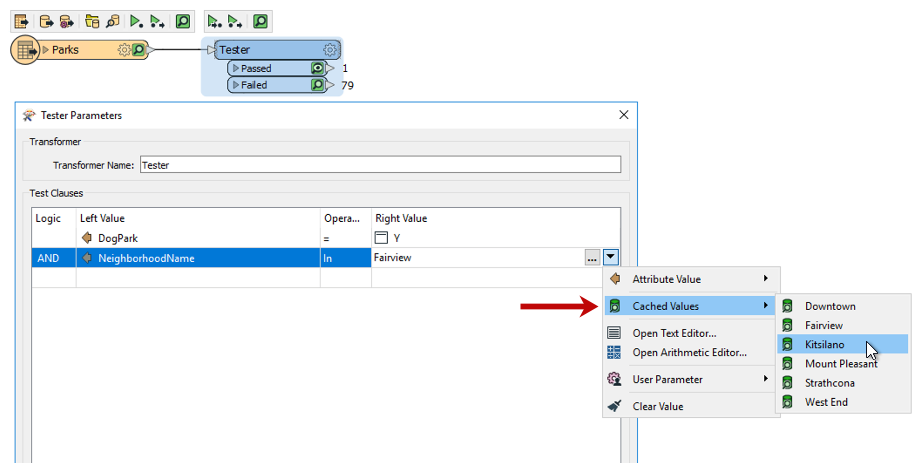
FME's always been a model-based tool. You set up the model and then run the translation. But now... now we are starting to make use of the data inside the workspace authoring tool. So this is perhaps a bigger change to FME than you realize.
But even by itself, this is very cool and expect to see cached values available in more appropriate locations in the future.
Incidentally, re answer #5, cricket matches are often called a "test", so if we could test for them, it would be a Tester test test!
Annabelle's Answer: The ability to select cached values (Correct)
2) An upcoming webinar is titled "Everything you Want to Know About the FME Community (and XXXX)". What is the XXXX part?
- Gamification
- Home Licenses
- Hackathon
- FME Lizard Splashscreens
- Cricket Statistics in Central Canadian Provinces
It's a hackathon!

And not just any hackathon, we're putting more resources into it than before, and giving you more time than ever before to complete your projects.
Keep an eye out for more information (an email blast is going out soon) but in the meantime, go sign up for the webinar right now!
Annabelle's Answer: Hackthon (Correct)
3) On FME Server, how do I send different FME workspaces to different engines?
- Using different job queues
- Using a private user parameter
- Using specific workspace names
- Using automation triggers
- Using telepathic mind powers
On Server, you send different workspaces to different engines by sending the job to a specific queue. According to this blog post, we call it Server Capacity Management.
Here are the engines and their queues for one of our demo machines:
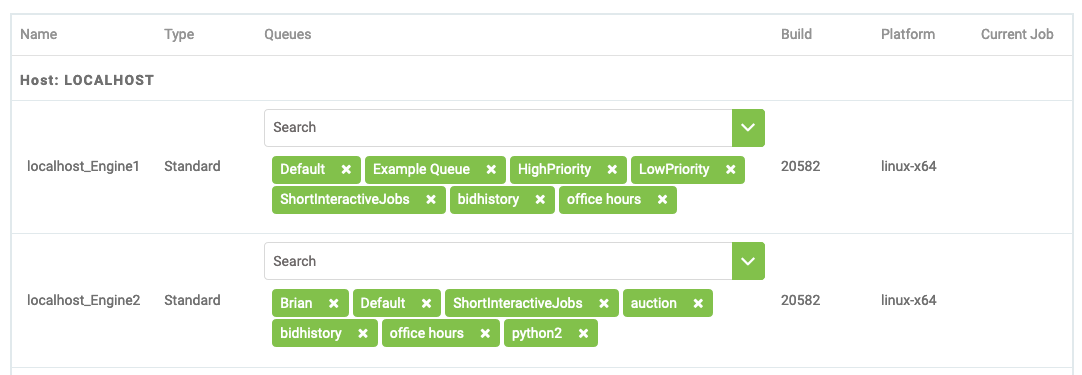
Submit a job to the "auction" queue, and it gets run by engine 2. Jobs in the "HighPriority" queue get run by engine 1.
But how do you specify which queue a job goes in to? That's simple. Each repository has its own default queue, or you can pick a specific queue in the Run Workspace advanced parameters.
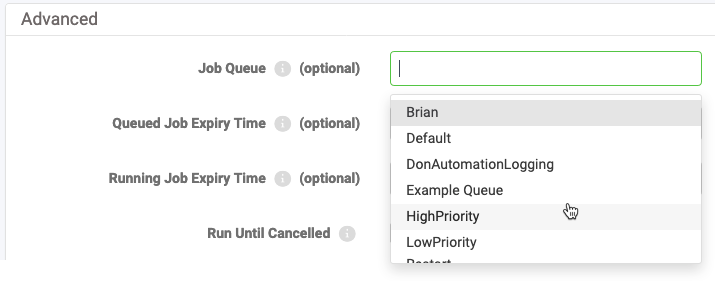
Annabelle's Answer: Using automation triggers (Incorrect) - I think Annabelle was attracted by the hipster-ness of Automation, when she really knew that it was Job Queues.
4) An early CAD format that Safe supports is called IGDS. What does IGDS stand for?
- Iterative Ground Drafting System
- Interactive Graphics Design System
- Intermediate Geographic Data System
- Incorporated Global Drawing System
- Institute for Governmental Dodo Studies
Did you know this? Because interestingly, the FME documentation doesn't mention what IGDS means. Also, I'm not sure an online search would do much good, given how long it is since IGDS was a thing.
I mean, the computer terminal you used IGDS with was like this:
I say "terminal" because the actual processing occurred on a Vax machine in a nearby server room.
So if you got this question correct, very well done.
Annabelle's Answer: Interactive Graphics Design System (Correct)
5) How do I first bring up the dialog to apply versioning to a newly exported custom transformer?
- The versioning dialog automatically appears when you export it
- Change Transformer Parameters > Advanced > Versioned to Yes
- Make an edit to the transformer and click Save
- Close the transformer, then reopen it
- Close the transformer, reopen it, make an edit, and click Save
So, you create a custom transformer and export it to an fmx file. Now it's open in FME Workbench and listed as version 1. But how do you get version 2?
Well, there's a difference between a custom transformer that's versioned and one that isn't.
An unversioned transformer - like the one you start with - can only be versioned when you close the file on an "edit session". But the first session doesn't count. So you have to close it, reopen it, make an edit, then click Save. Now you are prompted to version the transformer and create version 2.

But from then on it's a bit more simple and logical. A versioned transformer prompts you when you open the file. So once you've gone through the steps to create a second version, from then on you'll be prompted to create a new version (or not) when you open the fmx file.
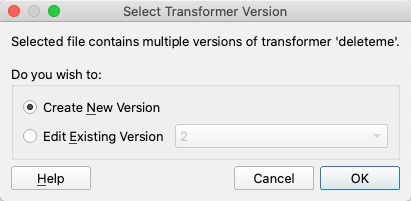
Annabelle's Answer: Change Transformer Parameters > Advanced > Versioned to Yes (Incorrect)
In 2020 Eric is 3 years old. Tim just turned 11. How old is Eve?
- 3
- 5
- 7
- 9
- 11
Well, this got everyone in a mess, but then it is supposed to be "the impossible question".
As before with names (especially very short ones like this) the answer is to type it into Workbench:
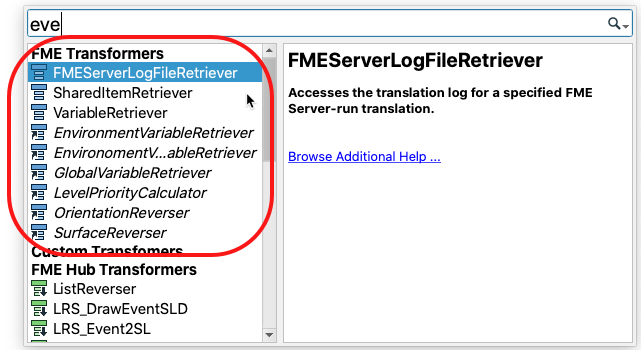
Eve is 9 because there are 9 transformers (and aliases) that appear in Quick Add. Eric only has 3 (NumericRasterizer, RasterNumericCreator, NumericRasterCreator).
Tim just turned 11 because there was an 11th transformer that responds to his name added in FME 2020.1. The new transformer is the TimeWindower. This transformer is an aid to processing continuous data streams. If I read it correctly, it will keep features over a set period of time (say 3 minutes) and then timestamp and release those features for further processing.
Definitely an interesting transformer to keep in mind, especially as you could say it is Tim's 11th birthday present!
Annabelle's Answer: 7 (Incorrect)
ScoresWell, Annabelle got 3/6, so let's see how you all did:
- Quiz Week: 35 (July 13/2020)
- Number of Entries: 33
- Best Score: 6
- Worst Score: 3
- Average Score: 4.48
- Perfect Scores: 6
- Easiest Question: 4 (33)
- Hardest Question: 6 (10)
Hmmm. If the worst score was 3, then I don't think Annabelle won. Interestingly, question 4 (IGDS) was the easiest question. I bet you all Googled it!
So how did you do as a group?
- Beat Annabelle: 25
- Equalled Annabelle: 8
- Were Beaten by Annabelle: 0
Close Annabelle, but it was not to be a win. The overall score is now...
- Users 21 Safers 7
And I'm still on the hunt for a winning Safer (it's a losing streak of 8 now; the last winner was Mark Stoakes). OK, your table is... interesting. I've always filtered it by users entering 7 times or more. Today we have four new users on the list and two of them have a 100% record!
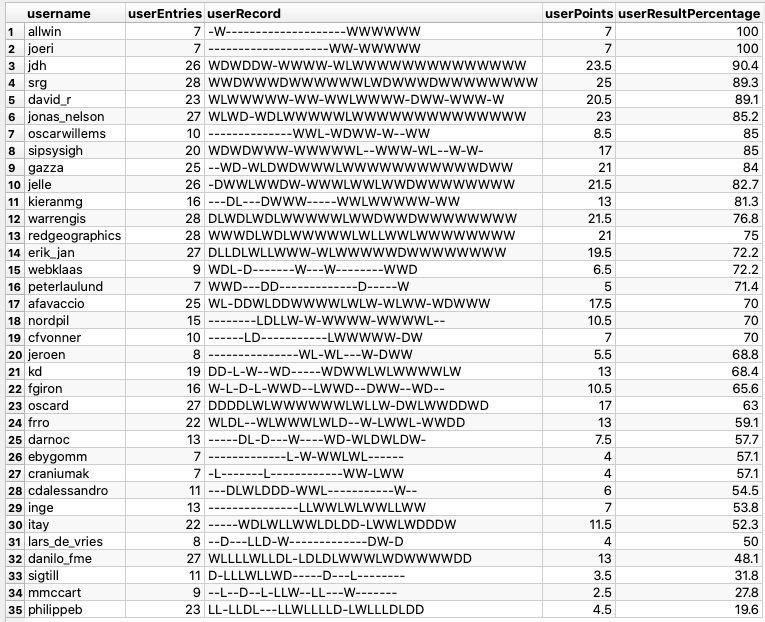
I'm going to leave it to you to decide whether allwin and @joeri are deserving leaders, but congratulations for sure on being 7/7.
Meanwhile, the Safer table:
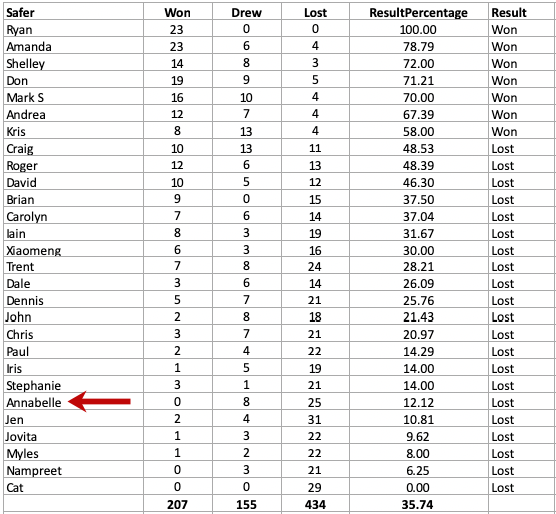
Next week...
















